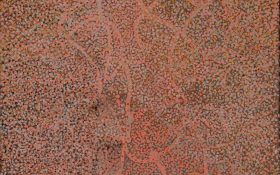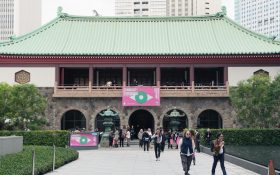Detail of alleged Whiteley Blue Lavender Bay was sold for $2.5 million to Sydney Swans chairman Andrew Pridham in 2007. Photo: Supplied
This week the case over three fake Brett Whiteley paintings has resurfaced in court. The paintings were allegedly made by conservator Mohame Aman Siddique and sold by art dealer Peter Stanley Grant. The pair have consistently pleaded their innocence.
While the case has been in and out of court for several years now, new evidence was heard in the Victorian Supreme Court on Tuesday.
A key witness, a book and paper conservator who had a room within Siddique’s studio – Guy Morel – presented to the Court photographs of the alleged “forgeries” during their painting.
He told the Court that he stood on a chair atop of a workbench in the studio and held his camera over a 2.5 metre wall partition and took photographs, documenting the three paintings at the centre of this case.
Morel took eight photographs of the Blue Lavender painting at various stages of completion in October 2007; another six photographs of the Orange Lavender Bay painting between October to December 2008, and three photographs of the painting, Through the Window, Lavender Bay, between February and August 2009.
The photographs also showed opened books with images of Whiteley paintings, including Big Orange (Sunset) painted in 1974.
Morel contacted Victoria Police.
Defence barristers for Gant and Siddique say the paintings captured by Morel are legitimate copies that were created legally.
Gant and Siddique are charged with unlawfully profiting $2.5 million by selling the allegedly fake Big Blue at Lavender Bay painting to Sydney Swans chairman and merchant banker Andrew Pridham in November 2007.
The pair also allegedly profited by $1.1m through sale of Orange Lavender Bay painting to Sydney luxury car dealer and art collector Steven Nasteski in 2009, and the third in the settlement of a debt.
The trial continues before Justice Michael Croucher.
A case for cans
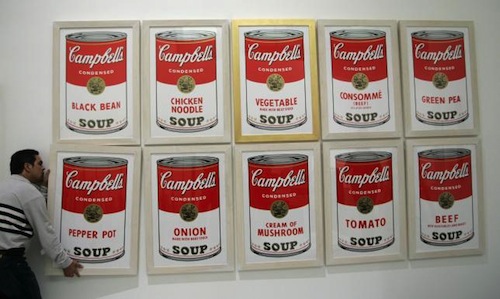
Across the globe this week, in what sounds like a case right out of a crime fiction – “The Soup Can Thefts” – Andy Warhol’s suite of Campbell soup screenprints went missing from the Springfield Art Museum, Missouri.
FBI made an offer of a $US25,000 reward for information about the 7 April theft. It is believed they were taken during a break-in during the early hours of the morning. The museum does not have security staff after hours.
Seven of the suite of 10 screenprints were stolen, which were valued at half a million dollars.
The Springfield Art Museum said in a statement on website that a burglary had occurred and The Electric Garden of Our Minds: British/American Pop exhibit, in which the Warhol paintings had been displayed, was closed as a security measure.
The screenprints are part of Set Number 31 of the Campbell’s Soup I collection, which has been owned by museum since 1985. The prints, not to be confused with Warhol’s original set of 32 soup can paintings, each measure 94 x 62cm. That is a lot of soup to walk away with!
The big question is what were the three soups they didn’t take? The missing seven are: beef, vegetable, tomato, onion, green pea, chicken noodle and black bean cans.
Online watchdog
‘It is very difficult to gain an exact idea of how many items of cultural property are stolen throughout the world and it is unlikely that there will ever be any accurate statistics,’ reports Interpol.
If you love a pie chart and some great chewy statistic then a new website that tracks Art Theft and forgery in world will be right up your alley.
It tracks what the most likely theft locations are; where they are most likely to end up and what the major art heists have been.
Simply, the more we bring art theft and forgery to the fore the more chance we will have globally an tightening up this illegal trade.
To put it in perspective, ‘after drugs and guns, art theft Is the biggest criminal enterprise in the world.’
In 2014 Australia stepped up its actions to prevent art theft. The Art Crime Consultative Committee was set up between the University of Western Sydney and NSW Police.
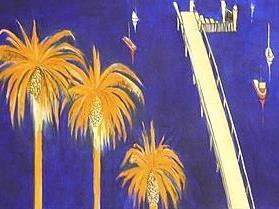
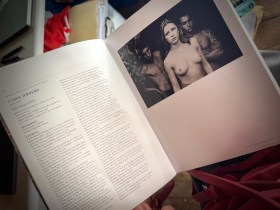
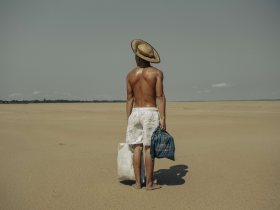
_Encounters-in-Reflection_Gallery3BPhoto-by-Anpis-Wang-e1745414770771.jpg?w=280)
